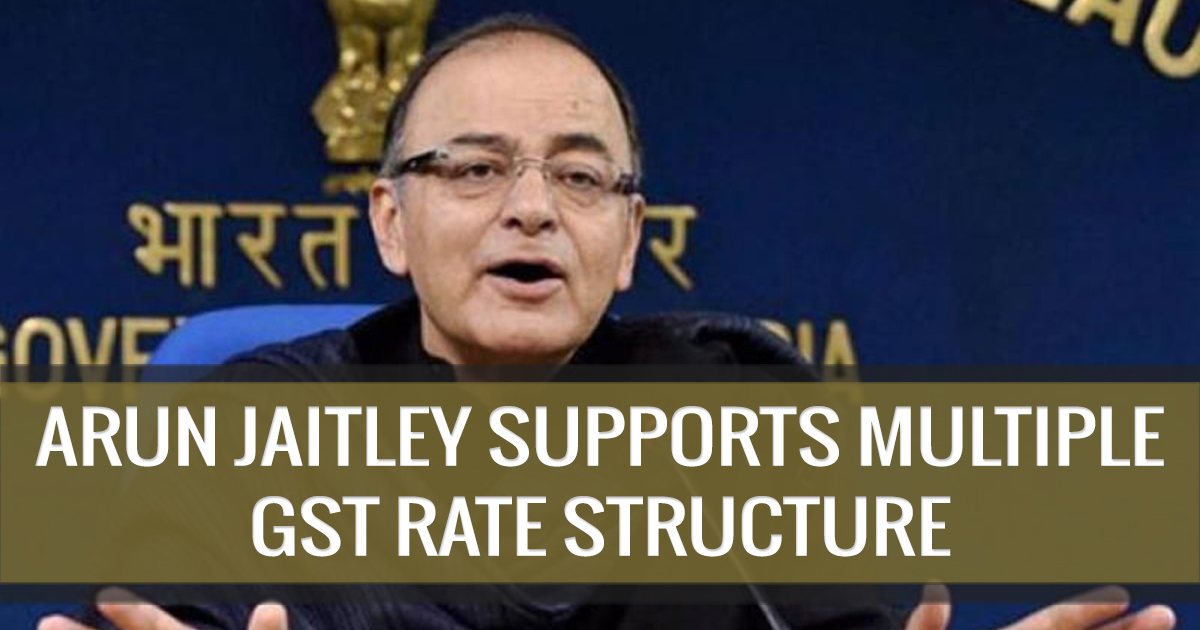
Finance Minister Arun Jaitley has been backing up the proposed GST rate structure which was divided into four rate slab in the previous meeting held. The tax rates of 6, 12, 18 and 26 per cent with almost every goods coming into the 18 percent structure.
Arun Jaitley stated on its blog that, “Some have suggested that multiple tax rates are disadvantageous to GST and would neutralize some of the advantages of a uniform tax structure. The reality is that multiple tax rates in India are inevitable. Different items used by different segments of society have to be taxed differently. Otherwise, GST would be regressive. Air conditioners and Hawai Chappals cannot be taxed at the same rate.”
Arun Jaitley showed that the biggest advantage of GST actually lies in the GST design itself, which provides for the seamless transfer of input tax credit across the value chain. Most commodities would be taxed at lower than present levels.
“because of the tax rate going down and cascading of tax on tax going away, higher compliance levels would reduce the level of non-compliance. The net gains of a more efficient tax would be felt over a longer period of time once the implementation glitches are all resolved.”
Read Also: How will GST Affect the Distributor/Wholesaler?
The luxury goods with a combined VAT of 14.5 per cent and an excise of 12.5 per cent tax should be taxed at 26 percent and this proposal has come from the centre itself. The Finance Minister mentioned that “Those taxed below 3 percent as the total tax of the Centre and the states will be taxed at a zero rate. Those between 3 per cent and 9 per cent will be taxed at 6 per cent; those between 9 per cent and 15 per cent will be taxed at 12 per cent and there would be a standard rate of 18 per cent.”
“If the cascading effect of these taxes and octroi is added, then the range of taxation of these products is between 27 percent and 31 percent. It has been proposed to the council to fix the rate of these items at 26 per cent,” Jaitley said. “Some of the items, which are now being used by the lower middle classes will be proposed to be shifted to the 18 per cent bracket.”
